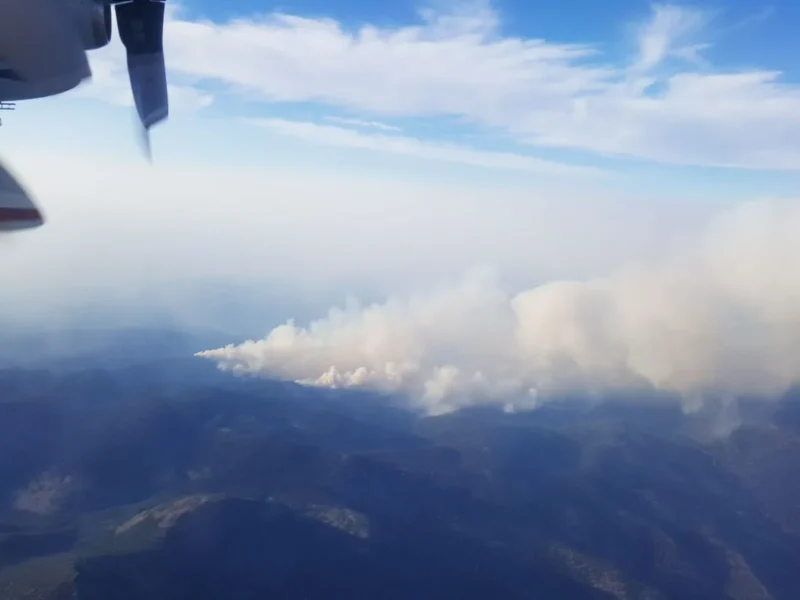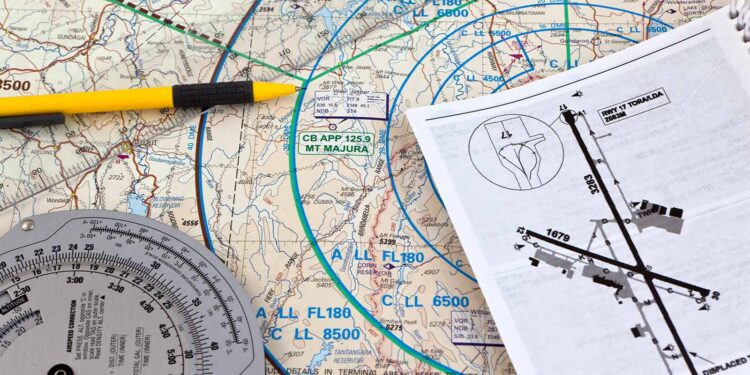A recent comment about flight plans by a reader has prompted me to write this post about flight itineraries.
Pilots have the option of filing a flight plan or a flight itinerary. There are important differences between to the two. It’s important to know what these differences are so you don’t expect a certain level of service that may be available when in fact it is not.
When do you need to file a plan or itinerary?
CAR 602.73(2) lets us know:
(2) No pilot-in-command shall operate an aircraft in VFR flight unless a VFR flight plan or a VFR flight itinerary has been filed, except where the flight is conducted within 25 nautical miles of the departure aerodrome.
There may be that rare case (bonus points if you can tell me when this would apply) where you may be flying from a Canadian airport to a US one, where the distance is less than 25nm. CAR 602.73(4) covers this:
(4) Notwithstanding anything in this Division, no pilot-in-command shall, unless a flight plan has been filed, operate an aircraft between Canada and a foreign state.
If you are doing circuits or airwork, sightseeing, etc.. near your airport, you do not need to file a plan or itinerary unless you will be leaving that 25nm boundary.
Although I cant seem to find it in the CARs, I’m pretty sure you need to file a flight plan if you are entering an ADIZ.
So you’ve determined that you need to file a plan or itinerary. So which one do you use?
The main difference between a flight plan and itinerary is where the responsibility is for letting the authorities know when you are missing or overdue.
A flight itinerary gives you the option of “filing” the plan with a responsible person. This person should be someone you trust to notify the authorities if you have not arrived at your destination.
A flight itinerary does not preclude you to do proper flight planning. You still need to provide them with your planned route of travel, speeds, altitudes, ETA, etc…
It is important to note that unlike with a flight plan, search and rescue is not automatically initiated by NavCanada if you are over due. The responsible person must contact the proper authorities to initiate SAR.
I would suggest that you give clear instructions to your responsible person on when and how to contact the authorities to initiate search and rescue. You can’t expect your responsible person to understand how to read a flight itinerary form. Something similar might work well:
If I don’t arrive at Anypoint Airport by 12:00pm, please contact the RCMP at: xxx-xxxx.
CAR 602.79 outlines what the responsible person must due when an aircraft is overdue.
Another big difference between flight plans and itineraries can be illustrated by the following scenario:
Lets say you’ve filed a flight itinerary with your responsible person. It outlines that you will arrive at your destination at 13:00. You depart on time and head towards your destination. About half way there, you notice that your engine is running a little rough. You decide to divert to the closest airport. This airport would take you 30nm north of your course. During your diversion, your engine quits and you are forced to land 2nm short of the airport.
Your responsible person calls the authorities at 14:00 because you are over an hour late. SAR is launched and they are looking for you along your planned route. Nobody was made aware that you diverted to another airport.
Granted, I’m sure you could tell FSS that you are diverting, but they know nothing of your itinerary because it was filed with someone else.
Flight plans on the other hand contain the same information as a flight itinerary. The difference is that the “responsible person” is now NavCanada. They will automatically notify the authorities when you are overdue.
Do you use a flight itinerary? If so, why? Personally I don’t see why I wouldn’t file a plan 100% of the time.
Mr. Buckley from CASARA had this to add:
Instructing your responsible person to call the RCMP is not sufficient under CARS, nor is it the best way to get the help you may need. The best way is to call 866 WX-BRIEF (866 992 7433) select the menu option emergency services and go from there.
Assuming ATC, FSS, CARS or JRCC is notified you are overdue (as above), the first thing they will do is a communications search, which will include looking for contacts from the aircraft in question to ATC, FSS, CARSs etc. So notifying FSS about a diversion when on a Flight Itinerary is every bit as good, useful and recommended as when on a Flight Plan. In fact giving regular position updates to FSS when possible is a very good idea as each position report removes a good chunk of the country behind you from the area that needs to be searched in the event the worst happens.


“Although I cant seem to find it in the CARs, I’m pretty sure you need to file a flight plan if you are entering an ADIZ.”
Yeah, CARs is horribly written and it’s impossible to find anything in there. It looks as if one actually doesn’t necessarily need a flight plan for ADIZ. CAR 602.145:
“(3) The pilot-in-command of an aircraft whose point of departure within the ADIZ or last point of departure before entering the ADIZ has facilities for the transmission of flight plan or flight itinerary information shall
(a) before take-off, file a flight plan or flight itinerary;
(b) in the case of a VFR aircraft where the point of departure is outside the ADIZ,
(i) indicate in the flight plan or flight itinerary the estimated time and point of ADIZ entry, and
(ii) as soon as possible after take-off, communicate by radio to an air traffic control unit, a flight service station or a community aerodrome radio station a position report of the aircraft’s location, altitude, aerodrome of departure and estimated time and point of ADIZ entry …”
However, the flight itinerary “shall be filed with an air traffic control unit, a flight service station or a community aerodrome radio station.” Which makes me wonder how it would be different from a flight plan. The only difference I see is when aircraft is cosidered overdue (1 hour on a flight plan, 24 hours on a flight itinerary).
And, um, yeah, I use flight itineraries with dispatchers at my flight school sometimes. Around Toronto it’s entirely possible to conduct some 25+ nm trips sometimes without ever leaving built-up areas. If I have to land in the GTA suburbs, I have a feeling that people will notice me there.
Also, I have some peculiar little aviation-related worries. One, for example, is that I’ll forget to tighten the fuel caps or oil cap during the walkaround (so I conclude every walkaround with the final check of the caps – harmless enough habit). Another is that I’ll forget to close my flight plan. :-) Yet, I certainly won’t forget to return to home base at the end of a flight, which automatically closes my flight itinerary.
I fail to see the relevance and importance of the second scenario you give. If FSS has your flight plan but you haven’t informed them of a diversion, they won’t know to look off your planned route either. And if you do contact FSS and let them know of where you’re going, they don’t need to know what your original route was. You could also mention who has your flight itinerary, so they’re just one phone call away from having all the other flight info they need to find you (such as endurance etc.)
Since you asked a question, let me ask one of you too. Do you always file a flight plan even if you’re staying within 25 nm of Buttonville? After all, if you go down in some god-forsaken swamp 24 nautical miles away from the aerodrome, you’re no better off than being 26 nautical miles away from it.
Blake, this was just the info I was looking for. I couldn’t remember if I had to file a flight plan if flying to an aerodrome within 25nm, for some reason I had a nagging idea that I did but this post helped (moreso than sifting through CARS.) Thanks. You asked why I prefer flight itineraries and I guess my answer is that when flying from an A/D with no ATC I find it easier as I don’t have to open over the radio through an RCO and close through the 800 #..your post does tell me that I need to do a better job of educating my “responsible person” though..thanks for that as well. Great blog.
Sean,
Flight plans in Canada are automatically opened at the departure time you set in the flight plan. So there is no need to open it over the radio.
This can bite you in the butt if you file a plan, but don’t end up going. Make sure that you cancel the plan in that case otherwise it will automatically open.